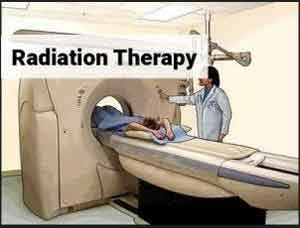- Home
- Editorial
- News
- Practice Guidelines
- Anesthesiology Guidelines
- Cancer Guidelines
- Cardiac Sciences Guidelines
- Critical Care Guidelines
- Dentistry Guidelines
- Dermatology Guidelines
- Diabetes and Endo Guidelines
- Diagnostics Guidelines
- ENT Guidelines
- Featured Practice Guidelines
- Gastroenterology Guidelines
- Geriatrics Guidelines
- Medicine Guidelines
- Nephrology Guidelines
- Neurosciences Guidelines
- Obs and Gynae Guidelines
- Ophthalmology Guidelines
- Orthopaedics Guidelines
- Paediatrics Guidelines
- Psychiatry Guidelines
- Pulmonology Guidelines
- Radiology Guidelines
- Surgery Guidelines
- Urology Guidelines
Oxygen-filled microbubbles increase susceptibility of breast cancer to radiation therapy

Most solid tumours are oxygen-deficient as they quickly outgrow the supply of oxygen-carrying blood vessels that can penetrate the tumour mass.This lack of oxygen makes them more resistant to radiation. In a bid to find a way to reverse oxygen deficiency in tumours Scientists of Jefferson's Sidney Kimmel Cancer Center have found out that injecting Oxygen-filled microbubbles increase susceptibility of breast cancer to radiation therapy. In fact Microbubbles were originally developed to help improve ultrasound imaging.
"Finding a way to reverse oxygen deficiency in tumours has been a goal in radiation therapy for over 50 years," says senior author John Eisenbrey, PhD, Assistant Professor of Radiology Thomas Jefferson University and investigator at Jefferson's Sidney Kimmel Cancer Center. "We've demonstrated here that oxygen microbubbles flush tumours with the gas, and make radiation therapy significantly more effective in animal models."
Microbubbles were originally developed to help improve ultrasound imaging. However, being able to "pop" oxygen-filled microbubbles within tumours using beams of ultrasound presented researchers with an opportunity. Most solid tumours are oxygen-deficient, in part because they quickly outgrow the supply of oxygen-carrying blood vessels that can penetrate the tumour mass. That lack of oxygen also makes tumours more resistant to radiation, which is why trying to flush tumours with oxygen became such a prized goal in the field.
In this study, Dr Eisenbrey and colleagues showed that popping the microbubble with ultrasound immediately prior to radiation treatment could triple sensitivity of the cancer to radiation. It also nearly doubled the survival times in mice from 46 days with placebo, nitrogen-filled microbubbles, to 76 days with oxygen-filled microbubbles.
How does it work? Radiation therapy works by creating oxygen - and other - free radicals in tumors, out of the oxygen present in the tissues. But when those oxygen levels are low, the free radicals produced by radiation therapy are also lower, offering less therapeutic benefit. With this approach, microbubbles are delivered to the general blood flow via intravenous injection but are popped locally raising the oxygen level only in a tumour. Interestingly, the investigators showed that oxygen increased throughout the cancer mass, even in areas that didn't have direct access to blood vessels.
"The very act of bursting these microbubbles within the tumour tissue seems to change the local physiology of a tumour and make cells generally more permeable to oxygen and potentially to chemotherapy as well," says Eisenbrey. "We think this is a promising approach to test in patients to amplify the effects of radiation therapy."
In fact, Dr Eisenbrey and colleagues at the Sidney Kimmel Cancer Center are currently using a similar approach in a first-in-human clinical trial of microbubbles for improving radiation therapy of liver cancer.
Using an FDA-approved microbubble contrast agent, the researcher is bursting microbubbles in patients with liver cancer in combination with their standard treatment with radioembolization therapy. Though not filled with oxygen, the microbubble popping is thought to create enough disruption to a tumour to offer therapeutic benefit over radioembolization alone.

Disclaimer: This site is primarily intended for healthcare professionals. Any content/information on this website does not replace the advice of medical and/or health professionals and should not be construed as medical/diagnostic advice/endorsement or prescription. Use of this site is subject to our terms of use, privacy policy, advertisement policy. © 2020 Minerva Medical Treatment Pvt Ltd